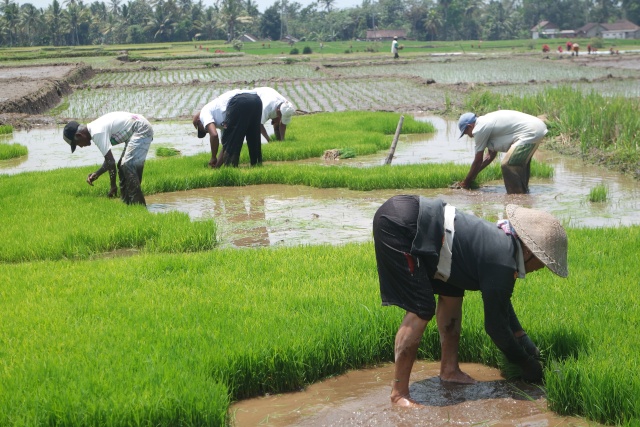July 28, 2010
Karim Raslan: Surabaya Pilgrimage
On the surface at least, Surabaya is changing. With its streetlights, planted flower beds and sidewalks, Indonesia’s second largest city is neater, safer and more prosperous than ever before.
Decentralization has unleashed urban East Java’s dynamism. Indeed, according to Ikhsan Modjo, Bank Negara Indonesia’s regional chief economist, the city’s 7 percent growth rate over the past four years has consistently surpassed national levels.
Leak Kustiya, editor in chief of Radar Surabaya newspaper, is equally bullish: “Our sense of identity and semangat [pride] has really risen. We’re very tough, independent people, but nowadays we also realize the need to work together. Indeed, we’ve become a major national center for tourism, retail and entertainment.”
Development has also started spreading outward, pushing the growth both south and westward with new townships — replete with 20-story apartment blocks — springing up beyond Pakuwon Indah and Graha Famili.
However, Surabaya’s past remains very much alive. In East Java, culture and history are never far from the surface. Indeed, this is reaffirmed by the Javanese tradition (some might call it an obsession) of visiting graves and religious places.
The tombs of the Wali Songo, the nine Muslim saints and preachers who first brought Islam to the island, are highly venerated and heavily visited, especially during weekends and school holidays.
After all, the act of ziarah kubur (pilgrimage to graves), reconnects people to their land and their history. In visiting places like Sunan Giri’s grave in Gresik, we are all reminded of Java’s rich, multilayered history — of the grand Hindu kingdoms like Majapahit and the generally peaceful processes through which these polities became Muslim.
Myths and legends are retold and in the retelling they are brought to life, celebrating a fusion of ideas, beliefs and practices. Yet some orthodox Muslims disapprove of such practices, labeling them “un-Islamic.”
Visiting Sunan Giri’s grave on a Sunday afternoon was enthralling. The air around the enclosed marble tomb was heavy with moisture: sticky and almost suffocating.
Dripping with sweat, I tried to concentrate on reading the Surah Yasin prayer. Fortunately, the wooden walls within the tomb were punctuated by carvings, letting in an occasional breeze.
I pressed my back against the wood for momentary relief from the heat. The tomb itself was located on the top of a small hill in Gresik, around 10 kilometers north of Surabaya.
Surrounded by mud flats, salt pans and the deltas of the Brantas, Bengawan Solo and Porong rivers, the coastal region has long been one of Java’s most densely populated areas.
It is also a place where land and water merge almost imperceptibly, an apt metaphor for the way in which different religious practices have melded so neatly there.
Here on the northern shores of Java, Islam gained adherents village by village, town by town. One by one, the people of Demak, Kudus, Tuban, Gresik and Surabaya became part of the faithful.
It is a process that is recorded, recounted and re-enacted by pilgrims and devotees as they make their way between the nine tombs of the Wali Songo — something that’s been taking place for well over half a millennium.
Having completed my prayers, I stepped away from the actual grave site, weaving through those who were still in prayer. My guide, Rijal Mumazziq, a young intellectual from Nahdlatul Ulama, Indonesia’s largest Muslim organization, led me to a nearby stall.
We took a seat on a long bench and ordered tea. It was hot and sweet, yet I found it strangely refreshing. As we drank, Rijal pointed out to me the architectural parallels between East Java’s mosques and Bali’s temples.
At the same time we looked on as hundreds more pilgrims walked by. Just outside the town, I had seen a vast parking area filled to brim with buses and minivans.
It was a veritable parade: entire villages, comprising three or four generations of the same families, visited all at once.
They brought a mixture of seriousness, awe and trepidation to the place — no doubt they were fearful of being lost in the crowds or getting separated from their fellow travelers.
Their fear in many ways mirrors Indonesia’s concerns as it enjoys the mixed blessings of modernity and economic progress.
The fear of “losing” one’s identity and culture in the globalized world is just as potent as being lost in a throng. But as I saw the devotion in their eyes, I thought that Indonesia might be spared from this fate for at least a little while longer.
Karim Raslan is a columnist who divides his time between Malaysia and Indonesia.
Jakarta Globe
